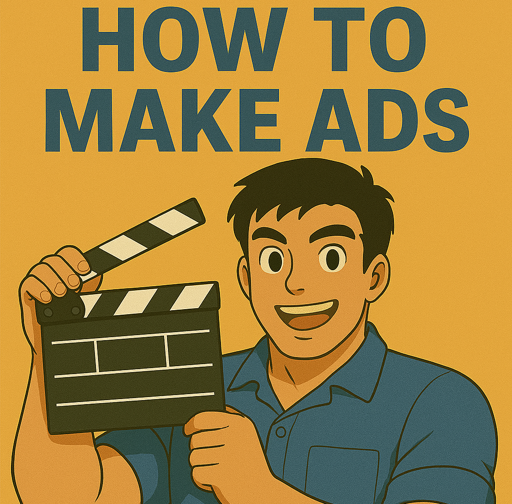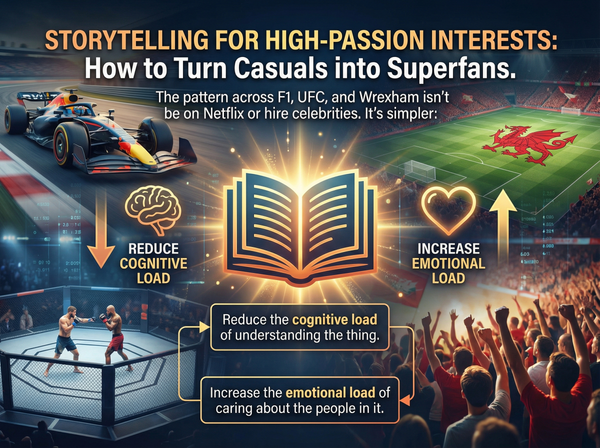How to Make Ads That Close Deals

Why Most Ads Fail
Your ads aren't just creative assets - they're 24/7 salespeople working for your business.
If a salesperson came to work every day and generated zero leads, you'd fire them. Yet most businesses tolerate ads that do exactly that: look pretty, get likes, and convert nobody.
The difference between ads that work and ads that waste money isn't budget or creativity. It's treating your ads like what they actually are: sales conversations at scale.
Here's how to engineer ads that sell like your best closers.
Rule 1: Write for One Person, Not Everyone
Failing ads try to appeal to everyone: Discover amazing products that will change your life.
Winning ads speak to one specific person: For exhausted working moms: Get dinner on the table in 15 minutes without the guilt.
How to nail this:
Visualize your customer's exact situation. Where are they when they see your ad? What problem just frustrated them five minutes ago? Write as if you're sitting across from that one person.
Give immediate value upfront:
- Download our free 'Profit Leak Audit'—find hidden revenue in 5 minutes
- Get our $47 'Email Template Pack' free (no signup required)
Test relentlessly: Run multiple headlines, calls-to-action, and images simultaneously. Double down on winners, kill losers fast.
Rule 2: Headlines Are Your Qualifying Questions
Your headline's job isn't to be clever - it's to filter out tire-kickers and magnetize ideal buyers.
- Weak: Transform Your Business Today!
- Strong: For B2B Companies Losing Deals to Competitors: Close 40% More Sales with This One Change
What makes headlines convert:
Specificity sells faster than vagueness:
- Lose 15 pounds in 6 weeks > Get fit fast
- Save 8 hours per week on bookkeeping > Streamline your workflow
Curiosity creates clicks:
- The $2 Ingredient That Cuts Grocery Bills by 30%
- Why 87% of 'Successful' Entrepreneurs Quit Within 3 Years
Exclusivity increases desire:
- For Software Founders Only: The Retention Strategy VCs Don't Want You to Know
Rule 3: Psychology Beats Creativity Every Time
Forget trying to be cute or viral. Your goal is to be a trusted advisor who understands their world.
Proven psychological triggers:
Higher prices can increase desire: A $2,000 course positioned as 'exclusive' often outsells the same content at $200. Scarcity and investment bias are real.
Solve urgent pain, not distant goals:
- Stop wasting 3 hours daily on manual reports (urgent)
- Build wealth for retirement (distant)
Name your solution like a story:
- The 'Fire Your Virtual Assistant' System
- The 'Sleep While You Scale' Method
What to avoid:
- Gimmicky visuals (dancing mascots, stock photo handshakes)
- Impossible promises (Millionaire by Monday!)
- Industry jargon that confuses prospects
Rule 4: Images Should Sell the Outcome, Not the Product
- Failing approach: Stock photos of your team looking professional
- Winning approach: Your customer enjoying the result of buying from you
Examples that work:
- Real estate: Family hosting friends in their dream backyard
- Business software: CEO reviewing growth charts from a beach chair
- Fitness program: Client confidently wearing clothes they couldn't fit into before
The test: If someone sees your image and can't immediately picture themselves getting that result, change the image.
Rule 5: Tell a Complete Story (Even in 15 Seconds)
Even short ads need narrative structure. Random features and benefits don't sell - stories do.
The proven formula:
- Identify the problem: Tired of email campaigns that get ignored?
- Position your solution: We help B2B companies get 3x more replies using conversation psychology
- Provide proof: Our average client sees 40% higher open rates in 30 days
- Direct action: Get your custom email audit free
- Bad example: 50% off everything! Limited time!
- Good example: Struggling to keep quality employees? Our clients reduce turnover by 60% using these retention strategies. See how it works.
Rule 6: Test Everything That Matters
Most businesses test nothing, then wonder why their ads don't work. Smart businesses test systematically.
What to test first:
- Headlines: Emotional vs. logical appeals
- Offers: Free trial vs. demo vs. consultation
- Call-to-action: Learn More vs. Get My Free Guide vs. Start Today
- Images: Product-focused vs. outcome-focused
Real example:
A productivity app tested two headlines:
- Manage Your Tasks Better (logical)
- Finally Leave the Office by 6 PM (emotional outcome)
The emotional headline generated 4x more conversions with the same audience.
Rule 7: Lead Magnets Should Pre-Qualify Buyers
Giving away generic freebies attracts freebie-seekers, not buyers. Your lead magnet should appeal specifically to people ready to purchase.
- Generic approach: Download our free ebook about marketing
- Buyer-focused approach: Get our $97 'Client Acquisition Playbook' - for agencies ready to double their retainer clients
The second approach gets fewer downloads but higher-quality leads who actually become customers.
The Would My Best Salesperson Say This? Test
Before launching any ad, ask yourself:
- Does this speak to one person's specific pain point?
- Does the headline filter out unqualified prospects?
- Is the offer compelling and specific?
- Does the image show the outcome they want?
- Would my top salesperson actually say this to a prospect?
If you can't answer yes to all five, keep refining.
Start Selling
Stop thinking about ads as creative projects. Start thinking about them as sales conversations you're having with thousands of prospects simultaneously.
Your ad is your hardest-working salesperson. Make sure it's saying the right things to the right people.
Keep Crushing!
- Sales Guy


